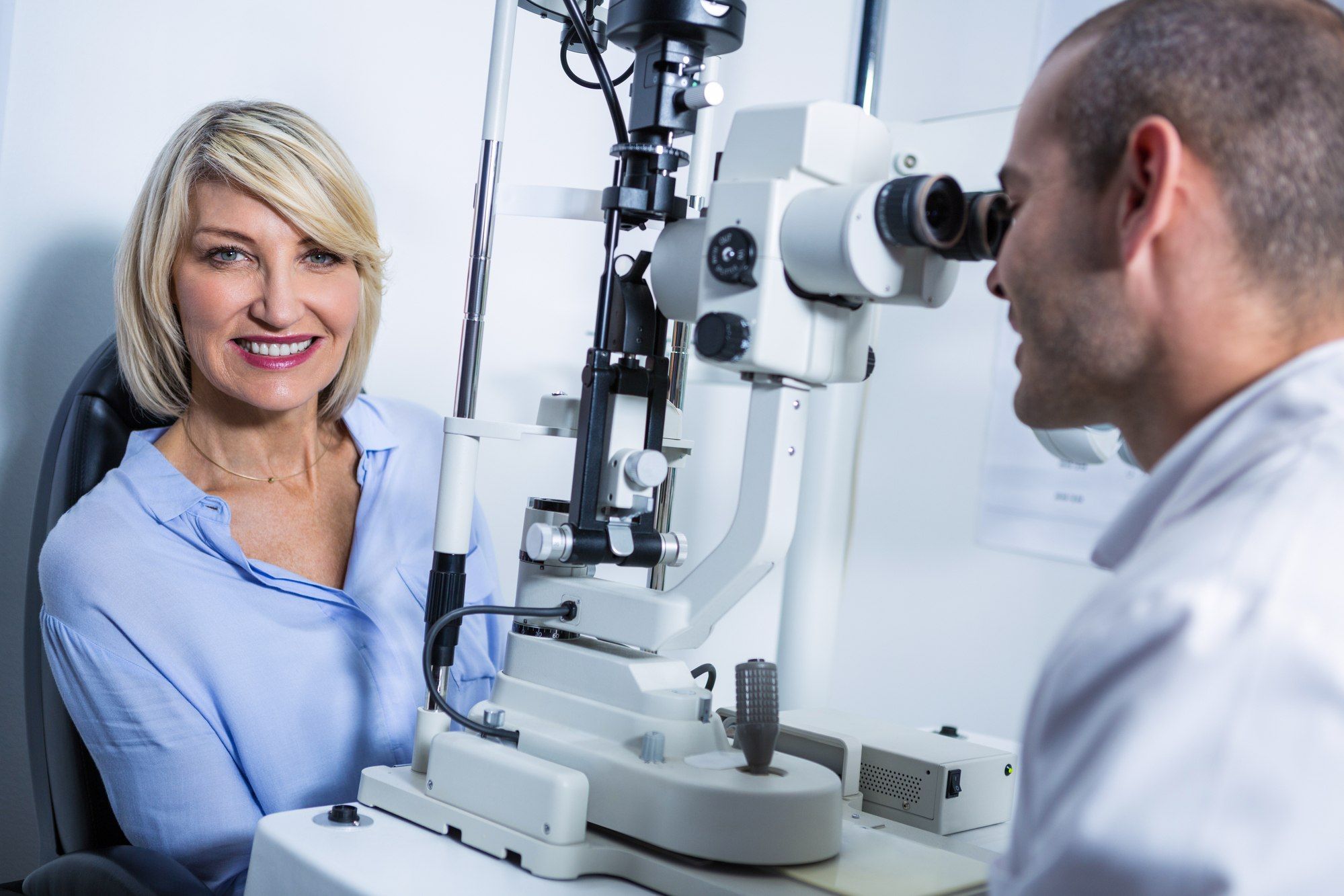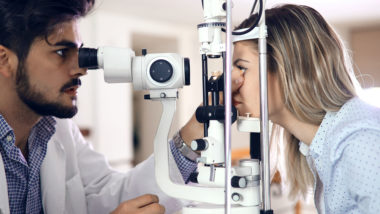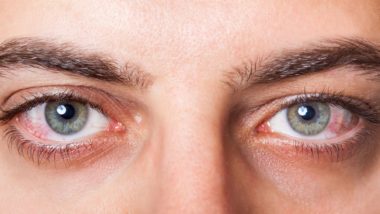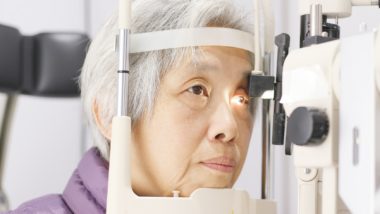Top Class Actions’s website and social media posts use affiliate links. If you make a purchase using such links, we may receive a commission, but it will not result in any additional charges to you. Please review our Affiliate Link Disclosure for more information.
Recent data is pointing to a link between Elmiron and eye damage.
Elmiron, used to treat interstitial cystitis, works by forming a mucus layer on the bladder wall to protect the bladder from irritating substances in the urine. This reduces inflammation and bladder discomfort.
Interstitial cystitis, also known as painful bladder syndrome, according to WebMD, causes bladder pressure and pain, and sometimes pelvic pain. The condition is chronic and may cause mild discomfort or severe pain. Interstitial cystitis causes sufferers to frequently feel as though they need to urinate, although they are only able to produce small volumes of urine.
The condition affects women at a greater rate than men: 3 million to 8 million women in the U.S. are estimated to suffer from the condition, while 1 million to 4 million men are affected, according to the National Institute of Diabetes and Digestive and Kidney Diseases.
While there is no cure for interstitial cystitis, various medications, including Elmiron, may ease some of the symptoms.
Elmiron is the only U.S. Food and Drug Administration (FDA) approved drug treatment for interstitial cystitis and has been a central part of addressing the disorder for decades, according to ScienceDaily.
However, like other medications, such as Zostavax, Elmiron may also cause several severe side effects, including eye damage, according to Drug Watch.
What Is Elmiron Eye Damage?
According to an article published by the American Academy of Ophthalmology in 2018, there may be a link between Elmiron and pigmentary maculopathy, a form of eye damage. Maculopathy is a term that includes various types of damage to the macula, the part of the eye’s retina responsible for visual sensitivity and acuity.
Six patients who were treated at the Emory Eye Center between 2015 and 2017 for unexplained pigmentary maculopathy were also found to be taking Elmiron for interstitial cystitis, the American Academy of Ophthalmology article said.
Postmarketing data available on the FDA’s Adverse Event Reporting System Public Dashboard for “Elmiron” and “pentosan polysulfate sodium” — Elmiron’s active ingredient — from 1997 to June 30, 2020, revealed 2,570 reports of adverse events, according to Drug Watch.
In response to the Emory Eye Center warning, three ophthalmologists working for Kaiser Permanente reviewed one case of misdiagnosis which then led to an entire view of the health care’s current patient database of 4.3 million, according to ScienceDaily. Ninety-one out of 140 identified patients who had taken an average of 5,000 doses of Elmiron over 15 years opted for an offered eye exam.
The doctors took multiple images of the backs of these patients’ eyes and divided them along a continuum of zero to definitely visible retinal abnormality.
Of those patients, 22 had signs of drug toxicity not previously identified. The degree of disease among the 22 had a clear relationship to the amount of the drug ingested in grams.
What Are the Symptoms of Elmiron Eye Damage?
Symptoms of Elmiron-related maculopathy may vary from patient to patient, but generally include some or all of the following, according to Drug Watch:
- Paracentral scotoma, or areas of vision loss in the field of vision
- Difficulty adjusting to dim lighting or the dark
- Difficulty reading
- Problems seeing close objects
- Dimming vision
Why Would Elmiron Cause Damage to the Eyes?

Jain is assistant professor of ophthalmology at the Emory University School of Medicine, Emory Eye Center where researchers believe Elmiron may generate a toxic metabolite that affects the eyes.
One component of Elmiron, called a glycosaminoglycan, is a negatively charged metabolite that might interfere with the interphotoreceptor matrix (IPM) inside the macula.
A metabolite is a byproduct of the body breaking down a medication. Metabolites can be intermediate byproducts caused by reactions of enzymes during the metabolism of a drug. The IPM in the macula is believed to act as a receptor for growth factors and to regulate the transportation of oxygen and nutrients in the eyes, according to ScienceDirect.
“In addition, a number of studies suggest the IPM also may play a significate role in the etiology of retinal degenerative disorders,” says ScienceDirect.
In the meantime, researchers from the Cleveland Clinic have offered the theory that Elmiron might interfere with signaling pathways of fibroblast growth factor, which is a protein that helps keep the retina healthy and working properly.
Research is continuing, and so far, there are no clear reasons why Elmiron eye damage occurs in some patients, but it does seem to be related to the amount of the drug consumed and the number of years a patient has been on the medication.
Are There Recommendations for Eye Care?
If a patient has been taking Elmiron and hasn’t exhibited any signs of retinal damage to date, a discussion of the risks and benefits of treatment with the prescribing physician is best.
One of the Kaiser Permanente ophthalmologists who participated in the patient review recommends patients have an annual eye exam as a precaution if they choose to remain on the medication. If the patient does have some early indication of damage, discontinuation of Elmiron might prove to slow or even stop the process.
What Other Side Effects Are Caused by Elmiron?
In addition to vision loss and damage, Elmiron may also cause a variety of other unpleasant or uncomfortable symptoms for interstitial cystitis sufferers, according to Drug Watch. These symptoms may include:
- Alopecia, or hair loss
- Bruising
- Nausea
- Gastroesophageal reflux
- Diarrhea
- Skin rash
- Abdominal pain
- Headaches
- Sleep problems or disorders
The drug’s label does not include warnings or information regarding Elmiron eye damage or pigmentary maculopathy.
Have Any Elmiron Eye Damage Lawsuits Been Filed?
In May 2020, a New York woman filed a lawsuit against Johnson & Johnson subsidiary Janssen Pharmaceuticals alleging she suffers from maculopathy, blurry vision, and cloudy vision as a result of taking Elmiron from about 2003 to 2020.
Plaintiff Becky W. claims she did not receive a warning regarding any serious risks of retinal damage, macular degeneration, or vision loss posed by her ingestion of Elmiron. Macular degeneration is a retina problem caused by damage to the macula.
Court documents indicate Janssen failed to investigate the risks to a patient’s vision even though a physician’s usage study conducted in the late 1980s and early 1990s allegedly noted adverse side effects such as optic neuritis and retinal hemorrhage (bleeding).
Optic neuritis is defined as an inflammation of the optic nerve, according to the Mayo Clinic, which can cause pain when the eye moves, as well as vision loss.
The lawsuit indicates 1991 research found Elmiron “inhibits regrowth and proliferation of retinal pigment epithelial (RPE) cells, and could thereby impair an important physiological pathway for retinal health.”
The lawsuit also notes two doctors from Harvard Medical School found the vision damage caused by Elmiron can keep progressing after the patient stops taking the medication. One patient allegedly was found to have worsening symptoms of Elmiron-related retinal maculopathy for six years after she quit the Elmiron regimen.
According to the lawsuit, Janssen was allegedly negligent and careless in the research and testing and the design or formulation of Elmiron, among many other allegations.
Patients who have experienced symptoms of macular degeneration or other eye damage after taking Elmiron for the treatment of interstitial cystitis may be qualified to hire an attorney and file a class action lawsuit against the manufacturer for not disclosing these possible dangerous side effects.
Victims who file lawsuits may be able to collect compensation for their injuries, pain and suffering, loss of income or earning capacity, medical expenses, and other costs.
The Elmiron Eye Damage Lawsuit is Case No. 3:20-cv-06070, in the U.S. District Court for the District of New Jersey.
If you were treated with Elmiron and developed vision problems, you may be eligible to participate in this free Elmiron side effects lawsuit investigation. Fill out the form on this page for more information.
ATTORNEY ADVERTISING
Top Class Actions is a Proud Member of the American Bar Association
LEGAL INFORMATION IS NOT LEGAL ADVICE
Top Class Actions Legal Statement
©2008 – 2024 Top Class Actions® LLC
Various Trademarks held by their respective owners
This website is not intended for viewing or usage by European Union citizens.
Get Help – It’s Free
Join a Free Elmiron Lawsuit Investigation
If you qualify, an attorney will contact you to discuss the details of your potential case at no charge to you.
PLEASE NOTE: If you want to participate in this investigation, it is imperative that you reply to the law firm if they call or email you. Failing to do so may result in you not getting signed up as a client or getting you dropped as a client.
E-mail any problems with this form to:
Questions@TopClassActions.com.
Oops! We could not locate your form.













